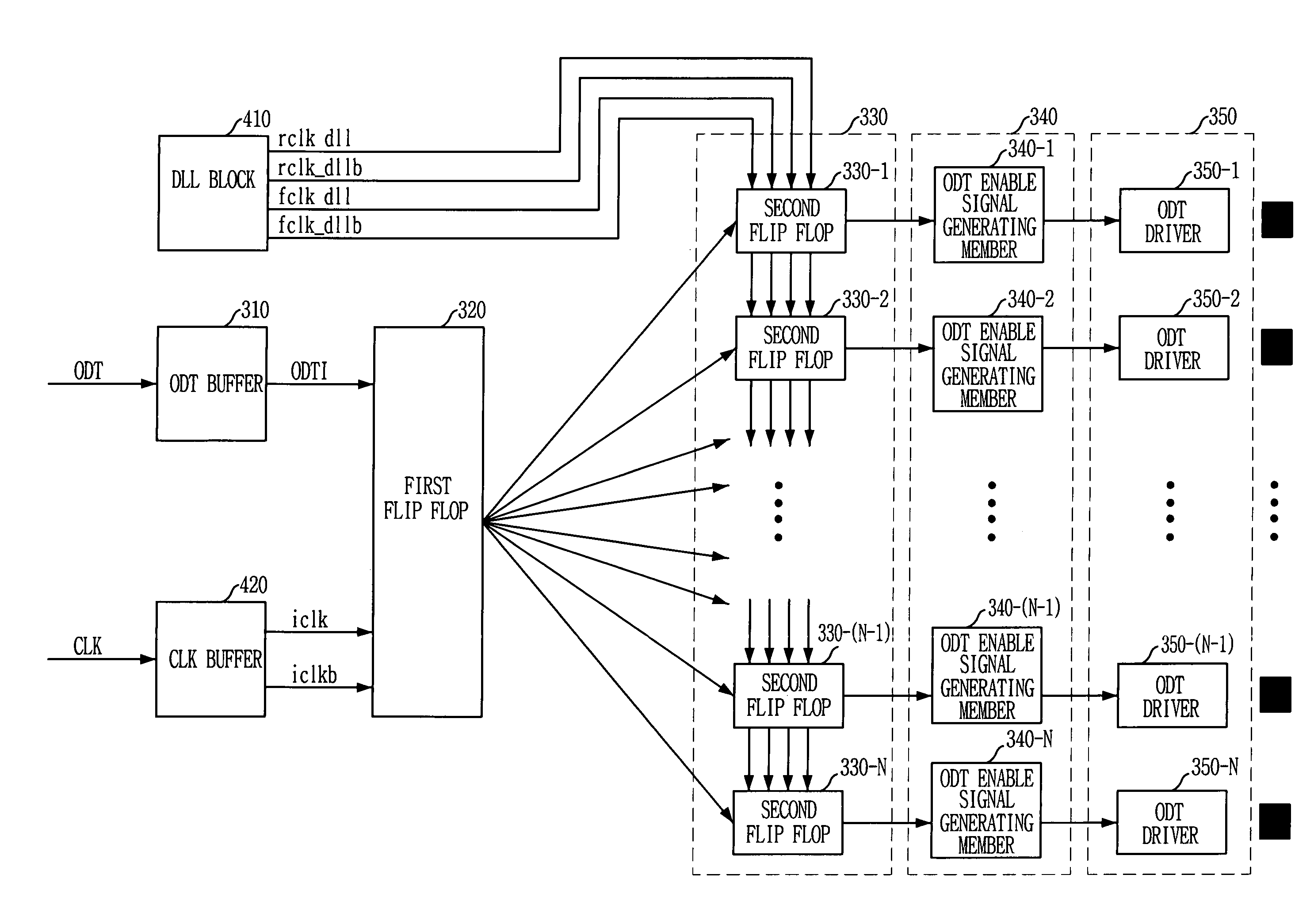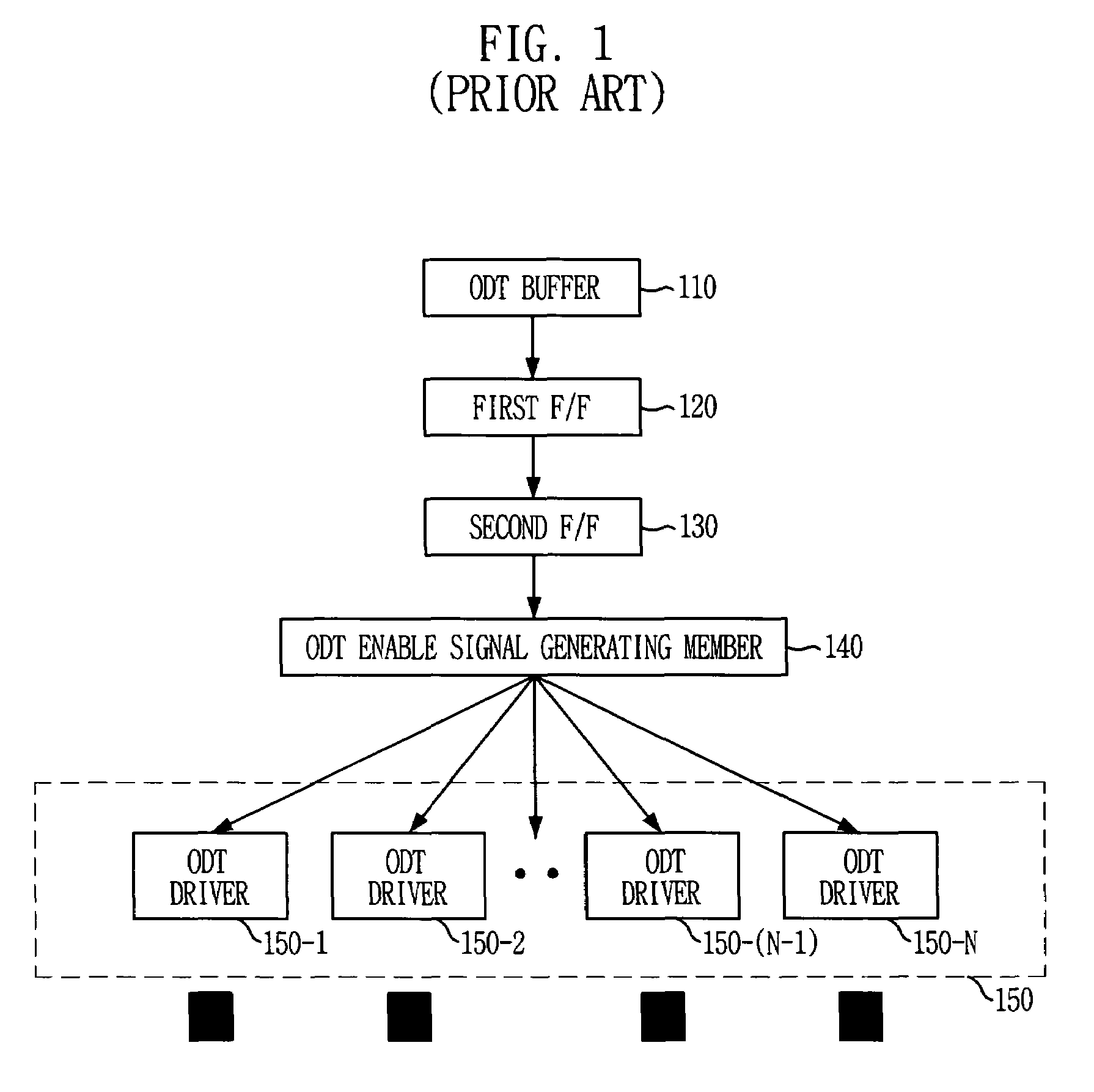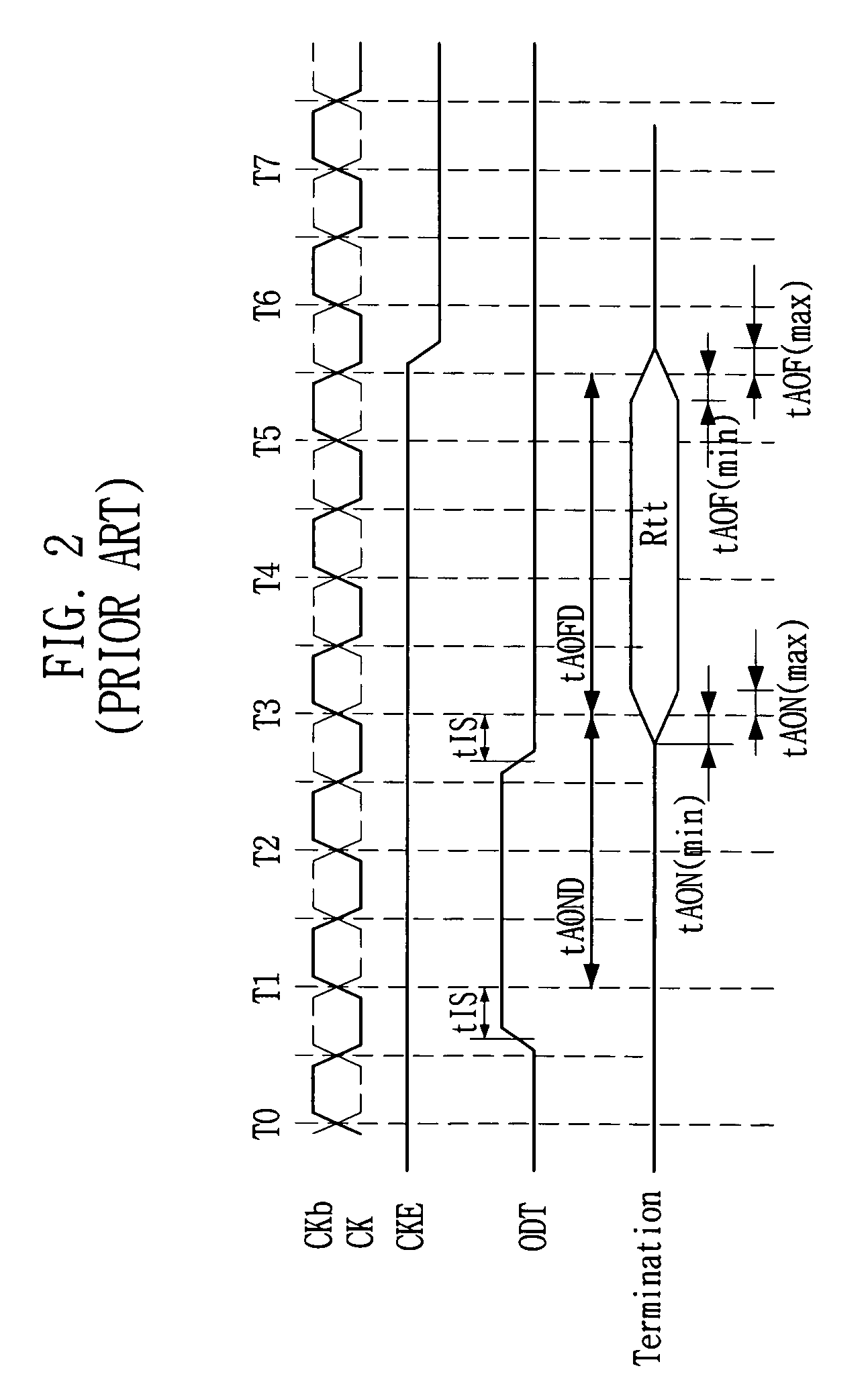Circuit for performing on-die termination operation in semiconductor memory device and its method
a technology of semiconductor memory and circuit, which is applied in the direction of pulse technique, baseband system details, instruments, etc., can solve the problems of delay corresponding, the required specifications of the odt turn-on time taon and the odt turn-off time taof are not satisfied, and the excess of the odt turn-on time taon and the odt turn-off time taof over the required maximum specifications
- Summary
- Abstract
- Description
- Claims
- Application Information
AI Technical Summary
Benefits of technology
Problems solved by technology
Method used
Image
Examples
Embodiment Construction
[0034]Hereinafter, a semiconductor memory device in accordance with the present invention will be described in detail referring to the accompanying drawings.
[0035]While the present invention will be described more fully hereinafter with reference to the accompanying drawings, in which a preferred embodiment of the present invention is shown, it is to be understood at the outset of the description which follows that persons of skill in the appropriate arts may modify the invention here described while still achieving the favorable results of this invention. Accordingly, the description which follows is to be understood as being a broad, teaching disclosure directed to persons of skill in the appropriate arts, and not as limiting upon the present invention.
[0036]FIG. 3 is a block diagram of primary portions in a circuit in accordance with a preferred embodiment of the present invention, and FIG. 4 is an entire block diagram in the circuit in accordance with a preferred embodiment of t...
PUM
 Login to View More
Login to View More Abstract
Description
Claims
Application Information
 Login to View More
Login to View More - R&D
- Intellectual Property
- Life Sciences
- Materials
- Tech Scout
- Unparalleled Data Quality
- Higher Quality Content
- 60% Fewer Hallucinations
Browse by: Latest US Patents, China's latest patents, Technical Efficacy Thesaurus, Application Domain, Technology Topic, Popular Technical Reports.
© 2025 PatSnap. All rights reserved.Legal|Privacy policy|Modern Slavery Act Transparency Statement|Sitemap|About US| Contact US: help@patsnap.com



